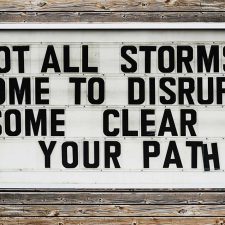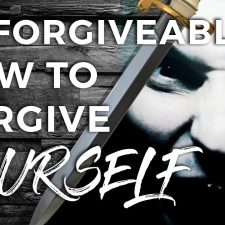In the Christian life, we all grow to know the importance of Bible study, prayer and worship. But fasting? Fasting is often the sword left on the table. And yet it can be a powerful tool for getting yourself out of the way, for advancing your prayer life and for canceling the calls of the flesh. So, what does Christian fasting look like?
Though the Edenic directive was to “subdue the earth” (Gen 1:28), too often we are subdued by it through patterns that have been sold to us as normal. Yet, Jesus didn’t say to His followers “if you fast” but “when” (Mt 6:16-18). Important: Fasting is not transactional. We don’t fast to move God; we fast to move ourselves out of the way. Like prayer and worship, fasting is one of our weapons of spiritual warfare and intercession. As fasting may be unfamiliar to some, here are a few ways to engage.
What to Add During Your Fast
Fasting isn’t only about removing. During your fast, you are encouraged to increase your personal prayer, Bible study and worship. Take time to be in God’s Presence and bare your heart to Him. Our Father delights in your willingness to carve out time to pursue relationship with Him. Heaven is excited about your pursuit and submission. Yielded hearts will be met well in this space.
5 Ways to Fast
Fast from screens, social media, secular music, world news (beginner)
We consume a lot these days, and much of our media diet can be from a world that’s passing away. You may find taking a hiatus from one or more of these sources challenging yet liberating. Use your new-found free time to commune with your Father.
Fast from vices (beginner to intermediate)
Coffee, tea, soda pop, chocolate, processed sugars, carbs, alcohol, tobacco and other substances can become habitual or addictive. More, the physical dependency they create in us strengthens the call of our flesh, opening us to further bondage or illness. (Rom 8:5+)
Daniel fast (beginner to intermediate)
Including fasting from vices, Daniel’s fast (Dan 1:12,16) removed all meat and is largely considered to have been a diet of vegetables. Though eating vegan is a fast for some but a lifestyle for others, this fast can be a fine first step toward preparing your body for entering a water-only fast.
Intermittent fasting (beginner to intermediate)
Intermittent fasting involves widening the gap between meals. For instance, a daily time-restricted intermittent fast may mean you stop eating all foods at 8PM and don’t eat again until 1PM the next day. Intermittent fasting may also include alternating days (fast one day, eat normally the next, fast one day, etc.)
Water fast (one to three days, intermediate)*
Whereas a Daniel fast is selective (removing some foods while allowing others), a water-only fast may be partial (intentionally skipping meals) or complete (no caloric intake at all.)
9 Tips on How to Water Fast
There are many physical and spiritual health benefits to water fasting, however there are a few things to know before jumping into a short water fast:
- Flipping the switch; By the end of your first day of water fasting, your body will begin entering a state called ketosis as it moves from burning glucose to burning fat. This is like switching between an electrical wall outlet (AC) to battery power (DC). You will usually have less stamina during a water fast, especially if you go longer than a few days; plan less activity.
- Hunger; The first few days of a water fast tend to be the toughest. This is when habitual hunger is at its strongest. Relax; you’re not starving. On an extended fast, real hunger from starvation takes several weeks to set in.
- Detox; As the work of constant digestion subsides, your body’s detoxification processes ramp up. Symptoms may include withdrawal headaches, coldness, nausea, fatigue, brain fog, irritability, body odor and bad breath. Get more rest, take breaks, bathe daily and remember the mints and gum.
- Water; Depending on your body weight, consider drinking 1½ to 3 liters (a half to full gallon) of water per day. Try to stay within this range. Not enough water can lead to dehydration and too much water can flush too many electrolytes. And, speaking of electrolytes…
- Salt; “Water-only” is a misnomer; without consuming trace minerals and salt, your fasting experience will be rough and shortened. DO NOT limit yourself to PURIFIED water during a water fast; it will drain vital electrolytes from your body, making you nauseous, light-headed or worse. Municipal tap water can be noxious due to chlorine, fluoride and other additives. Spring water with salt is better. The human body needs 2-4 grams (about 2 tsps) of salt each day. Normally, we get enough salt through our food, but during a water fast, you need to supplement. (Recommendation: Add Himalayan pink salt for the additional trace minerals.)
- Energy; Expect to have reduced energy during your fast (maybe 60-80% your normal levels.) Days two and three can be the hardest days, as your body is still switching over to battery power and you may be battling habitual hunger. Usually this switch-over process completes by day four and you start feeling better. Take time to lay down when you begin feeling fatigued.
- Heartburn; You would think heartburn wouldn’t happen during a fast because you’re not eating anything. Alas, the smells, and sometimes even the thought of food, may trigger stomach acid production and usher in heartburn.
- Commit; If you’re in a multi-day water-only fast, don’t consume calories again until you break your fast. Introducing random calories can create a glucose rollercoaster, undermine your ketonic stasis, kickstart hunger and potentially damage organs like the liver and kidneys.
- Breaking your water fast (refeeding); If you water fast for more than a couple days, you will want to break your fast gently. A good rule is to break the fast for the same duration as your actual fast. For example, if you water fasted for three days, you take three days to break your fast; if you fasted for 14 days, you take 14 more days to break your fast, etc. For breaking a three-day water-only fast, the danger of damage from poor refeeding isn’t high; you’ll probably survive even if that slice of pepperoni pizza makes you sick. Binging after weeks of not eating is fairly guaranteed to kill you, however. Refeeding after a three-day water fast may look like:
- Day 1: Soups and juices
- Day 2: Soft veggies and fruits
- Day 3: Full vegan plus fish
- Day 4: Back to normal eating
(*Warning: Some folks should not water fast without medical supervision, such as those with gout, diabetes (types 1 and 2) or eating disorders. Children and pregnant women should not water fast. Consult your doctor if you have concerns.)
Hopefully, these ideas have gotten you thinking about how you might approach your next (your first?) fast. Yes, of course you can fast longer than three days (or three weeks) but if you’re just starting out with fasting, hopefully these tips have helped you understand what you might experience during your fasting journey.














This was very helpful! I am seeking God for 7 days and want to ensure I’m being safe. Thanks!!
Glad you found this useful, Eric! Praying for your successful fast!